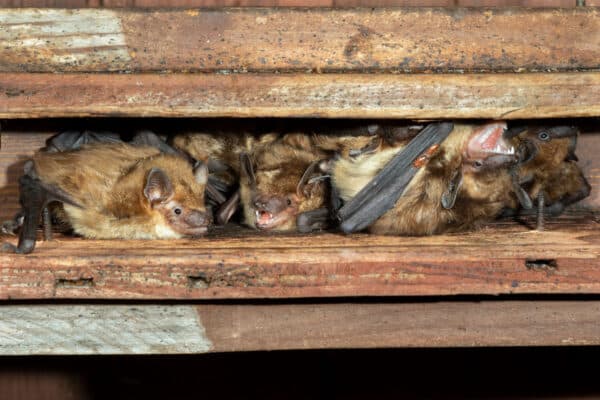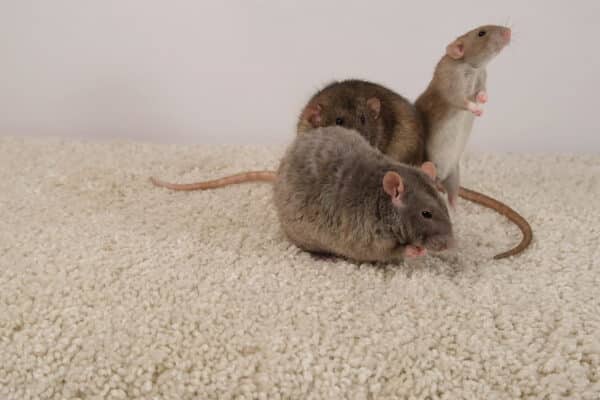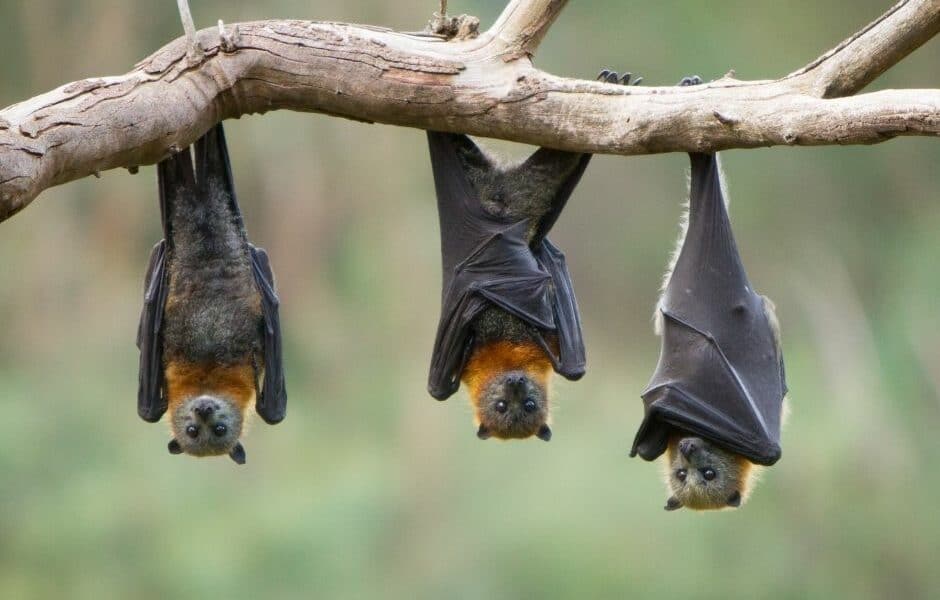
Fascinating bats don’t have an excellent reputation in human history. For one, they are associated with spooky stories and tales of blood-sucking vampires. Most people have a built-in fear of bats, whether they have ever truly encountered one or not. Perhaps our frightfulness of bats comes from more than just their creepy appearance. Bats are known to spread awful diseases, carry nasty parasites, and damage the structure of a home. One of the primary ways humans experience troubles from these creatures is through bat guano.
You may be wondering, “what is bat guano?“
In this blog from Covenant Wildlife, you’ll learn all about bat guano and its dangers to humans. Continue reading to learn more.
What is Bat Guano?
The short answer to this question is that bat guano is a bat’s feces or droppings.
An intriguing aspect of the relationship between bats and people is how important their droppings have remained in many cultures over the centuries. Bat feces has a high proportion of nitrogen, phosphate, and potassium, making it a remarkable fertilizer.
Not only does it add nutrients to the soil, but it also is known to have bioremediation properties. Bat guano can actually cleanse the soil. Moreover, microbes within the bat feces can loosen dirt, increasing its ability to hold water and creating more space for air. The microbes also aid in decomposition and can lessen the chance of soil diseases.
But, along with its benefits comes many drawbacks and dangers to humans.
How Do You Identify Bat Guano?
One of the easiest ways to recognize bat droppings is by identifying the piles. Since the feces is dropped from a roosting point aboveground, it will build up in piles on the attic flooring or roof space where the bats are present. The droppings are long thin pellets black or dark brown.
If you were to touch bat guano, it easily crumbles into dust. However, handling these droppings can be extremely risky for your health, so we certainly do not recommend doing so.
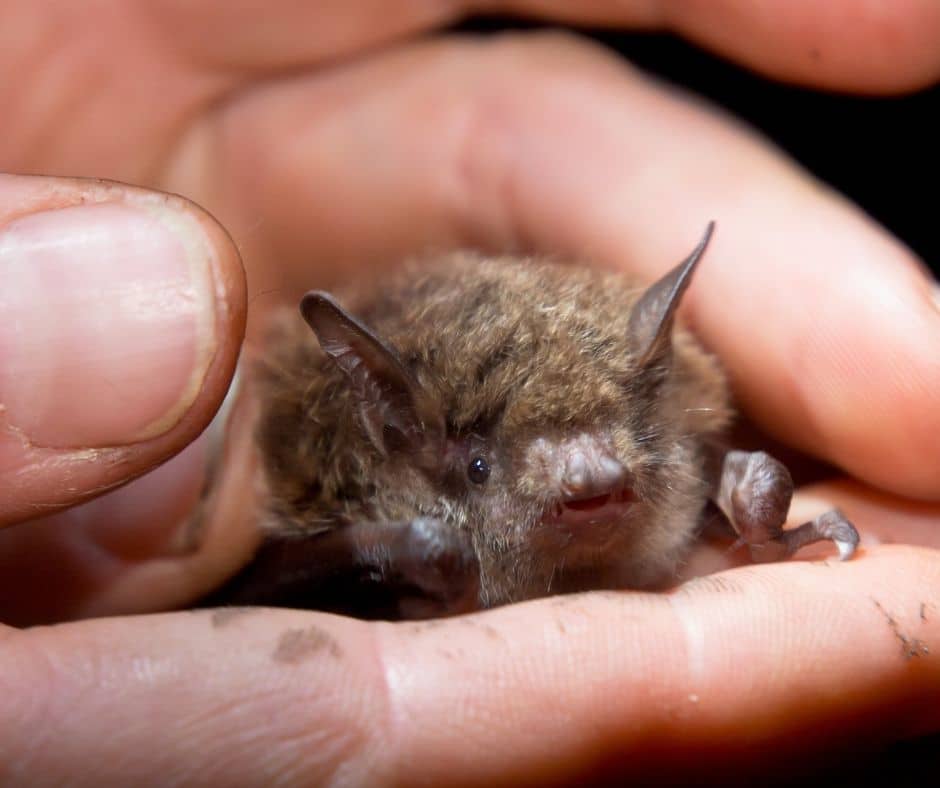
Why is Bat Guano Dangerous?
Although bat guano has benefits, it causes major concern for human health and safety.
Health Risks
Guano is extremely unsafe if inhaled, ingested, or handled. One of the most significant health concerns is that it can cause a terrible illness that harms the breathing system called histoplasmosis. The guano can also carry other diseases and bacteria, so great care needs to be taken in its removal.
Histoplasmosis is a rare lung infection that may occur when spores from the feces are breathed in and trigger severe symptoms. Bat guano can spread histoplasmosis to humans, as well as pets and cattle. This disease can impact breathing, and if left neglected, it can be life-threatening. Symptoms can consist of consistent cough or flu-like signs, which can be challenging for a doctor to recognize as the ailments are shared with many other conditions.
While it is not infectious between two individuals, the illness can affect many people who may be unaware they are at risk.
Additionally, people and animals can ingest salmonella from bat guano and urine. Symptoms include stomach cramps, vomiting, and diarrhea. Salmonellosis can occur when bat urine or feces contaminate a water source or food, which often goes unnoticed. To protect yourself and any animals on the property, seal exposed outdoor water and food sources.
If you live near an active bat population or work with these unique mammals, it is essential you use caution to avoid contracting a hazardous and potentially deadly disease. First, you should look for piles of bat guano and urine stains or puddles. You must prevent coming in contact with these dangerous waste products.
One way to ensure your safety when dealing with bats or an infestation is to mark the waste as you see it. Try carefully laying a piece of white paper on the guano or urine to remind yourself and others to keep their distance from the area.
Furthermore, if your profession involves working directly with bats or in their habitats, like caves, keep yourself safe by immediately washing your hands after work. Protective gear should also be worn, such as masks and gloves.
Damages and Safety Risks
Merely the weight of accumulated bat droppings can be a safety risk in a home. Bats roost in colonies, and if they decide to take up residence in your attic, their waste and droppings can pile up quickly. Just the weight of the bat guano is enough to damage your attic floor and end up with a potential mess inside your house should the floor give way.
A bat infestation can also cause other damages and safety risks. These animals don’t chew at structures as many other pests do. But their droppings are highly corrosive and can virtually dissolve the surface. Over time, the bat guano can damage the home’s structure, mainly when the problem is not addressed as quickly as it should be.
Not to mention, bat droppings and urine produce a pungent and unpleasant odor and permanent stains.
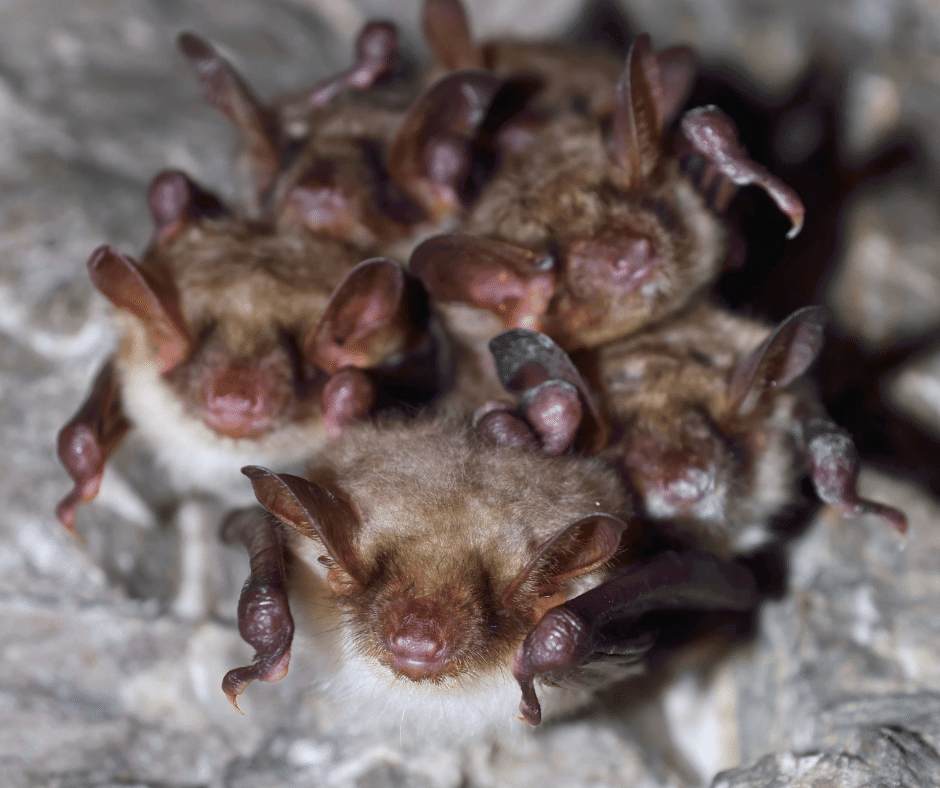
More About Bat Infestations
If you notice any signs that bats are in your attic, it’s crucial to call in a professional right away. They will have the proper protective equipment and know where they can safely release the bats.
Once the animals are gone, the area also needs to be cleaned and disinfected using a bleach solution. Everything must be properly disposed of to protect the health of you, your family, and the removal experts involved.
Signs of a Bat Infestation
Because of the decline of their natural habitat, local bat colonies roost in homes more often as the years go by. As we work towards restoring these critical environments for the bats, it is essential homeowners sharing their space with bats know the signs of a bat infestation.
They are more often found roosting in the attic or chimney. They enter the home by squeezing into tiny cracks and openings. You can identify a bat infestation by being familiar with the following signs:
- Seeing bat guano and urine
- Smelling a strong ammonia stench from their waste
- Hearing active bats during the night or early morning
- Noticing small, brown-colored stains around the cracks and openings in the home’s structure
- Observing bats soaring from or near your home around dawn and dusk.
Bat Prevention and Removal
The best method to avoid the risks of bats and encountering dangerous bat guano is to know what you should do to prevent them from roosting in your home or being attracted to your property. Here are some tips you can implement at home to keep the bats at bay:
- Using bat doors and chimney caps can keep the bats out but allow trapped bats to return outdoors unharmed.
- Ensure the structure of your home is intact. Seal all damages, including the tiniest openings bats use as an entryway into your house.
- Display predator decoys to deter bats. For instance, an owl decoy on the roof or next to the chimney will help to keep the bats from coming near.
Bat removal is a job that must be left to professionals for a couple of reasons. First, the safety and health risks of handling bats and their waste products require specialized protective gear and equipment.
Second, several bat species are endangered, and bats are protected by law. This means it is illegal to harm or kill bats. To remove bats from a property or home safely and humanely, it’s necessary to hire experienced professionals who know the most effective and harmless methods of removal.
Get Rid of Bats at The Very First Sign with Covenant Wildlife
If you’re witnessing any signs of a bat infestation in your home, the time to act is now. These are protected species, so you need professionals to remove them for you, like the experts at Covenant Wildlife.
Our experienced team will remove the bats and clean up any contaminants and guano left behind. This will keep you, your family, and your home safe from the destruction a bat colony can cause.
Contact Covenant Wildlife Removal now to schedule your appointment!

